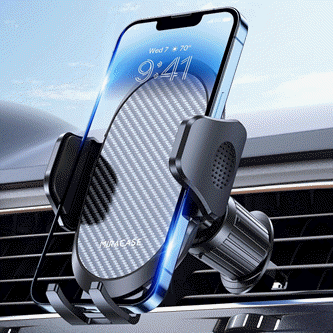harish.jonnalagadda@futurenet.com (Harish Jonnalagadda)
2024-12-24 08:04:00
www.androidcentral.com
Starting with the OnePlus 3, OnePlus maintained a consistent design language. While the design of each subsequent phone changed, the overall aesthetic remained largely the same, with smooth curves and rounded edges characterized by a great in-hand feel. It’s this familiarity combined with an obsessive focus on design that made using OnePlus phones enjoyable over the years.
After a decade, OnePlus is overhauling its design ethos with the OnePlus 13. Similar to most phones available today, the OnePlus 13 switches a boxier design, eschewing the flowing elegance of previous models. That said, the device comes with a vegan leather back (if you’re getting the Midnight Ocean variant), and it looks highly interesting.
Ahead of the global launch, I talked to Ryan Ruan, head of OnePlus’s Industrial Design Center, to get a better sense of the OnePlus 13’s design and battery tech, and what the manufacturer is doing differently this time. The obvious starting point was the move to flat sides, and why OnePlus decided to alter the design. Ruan noted that OnePlus’s design team “worked hard to make OnePlus 13 feel better in your hand than any other phone,” investing a “significant amount of time in refining the transition between the front and back glass and the straight-edged frame” to deliver better durability and a device that still looks elegant.
Because OnePlus phones had dual-curved edges in the past, there was an increased chance of damage to the front or rear panes of glass if the device took a tumble and landed on an edge. Ruan said this was a point of contention with its users, and that OnePlus has been “continuously discussing and validating how to ensure a smooth overall curvature connection without compromising the device’s drop resistance.”

With the OnePlus 13, Ruan said the goal was “for the transition surfaces to better conform to the natural curve of the user’s palm while also providing a secure grip; to this end, we invested in the refinement and validation of nearly a hundred models” before settling on the final design for the OnePlus 13.
On the subject of durability, OnePlus says it decided to use a Microfiber Vegan Leather back to allow OnePlus 13 customers to use the device without a case. The vegan leather back is highly intriguing, as it uses a softer texture that hasn’t been seen before on any phone. “We’ve fine-tuned the material composition and surface treatment to create an even more luxurious and durable texture that’s also environmentally friendly,” said Ruan.
“It’s designed to offer a natural leather-like grip without compromising on style or sustainability. A lot of other leather-backed phones normally sacrifice the in-hand comfort just to guarantee daily durability. In the end, the leather may feel sort of plasticky (with a very rough texture). However, on the OnePlus 13, the microfiber vegan leather material is something we worked on for over a year; it guarantees good durability, and more importantly feels soft in your hand.”
Ruan also stated that even though the Midnight Ocean model has a leather back, it doesn’t interfere with wireless charging to any noticeable degree. “The thinness of the vegan leather back enables good proximity to the wireless charging coil, enhancing the charging efficiency. Meanwhile, the high-temperature resistance ensures that the phone can handle the slight increase in heat that can occur during wireless charging without any adverse effects.”

The OnePlus 13 has a flat AMOLED panel this time, but it includes 2.5D quad-curved edges with a “micro-curve ratio” that Ruan says will make a difference while using the device — at the same time negating accidental touches. Ruan said the micro-curve transition between the flat middle frame and the quad-curve glass ensures users don’t get a sharp in-hand feeling, and guarantees a solid grip. “We chose to create a 2.5D screen which is designed to offer the visual appeal of a flat screen while also giving our users the smooth touch experience they get from a 3D screen.”
Continuing with the in-hand feel, Ruan revealed that the OnePlus 13 has a 50:50 weight distribution, so even though it has a sizeable camera module, it isn’t unwieldy to hold or use. “If you place your finger right under the OnePlus logo and support the phone, you’ll find the phone doesn’t lean towards one way or the other. That’s because we introduce an evenly-split weight distribution. It requires our engineers to figure out a way to allocate more components in the lower half of the phone to balance the weight.”
Another interesting tidbit is that OnePlus is eschewing Coring’s Gorilla Glass in favor of a custom Ceramic Guard solution on the OnePlus 13, with Ruan stating that it delivers “superior drop protection and scratch resistance. It’s reinforced with nano crystalline, a material that significantly enhances its fracture toughness. The result is that the OnePlus 13 display is twice as resistant to drops compared to conventional cover glass.”

In a similar vein, the OnePlus 13 gets IP68 and IP69 resistance, with the latter designed to withstand high-pressure jets of water at up to 80 degrees Celsius. Interestingly, IP69 doesn’t cover immersion in water, so manufacturers need to also have their devices tested for IP68 as well — that’s why you see most 2025 phones having both IP68 and IP69.
One of the most exciting changes coming to 2025 phones is silicon battery tech, with most Chinese manufacturers using a silicon-carbon anode in their batteries to increase density and durability. The OnePlus 13 also has this tech, and the 6000mAh battery is dubbed OnePlus Silicon NanoStack.

What’s particularly interesting is that OnePlus is using a dual-cell configuration with the battery. Honor, OPPO, and Vivo use a single-cell battery on their devices, and by using two cells on the OnePlus 13, you get the best of both worlds — increased density, and fast 100W charging speeds.
Notably, the OnePlus 13 is using a 10% silicon-carbon anode, leading to an energy density of 805Wh/L, a heady 5.5% increase over the OnePlus 12. That’s why OnePlus is able to fit a bigger 6000mAh battery in the OnePlus 13 while still delivering a phone that’s 10g lighter and 0.7mm thinner.
Ruan said the goal with the OnePlus 13 was to create a device with the best in-hand feel of any OnePlus phone to date, while ensuring it has better durability. Having used other devices that made a similar design transition — the Find X8 Pro and Vivo X200 Pro — in recent weeks, I’m excited to take a look at the OnePlus 13 and see if the manufacturer’s claims actually hold up. I’ll have much more to share about the OnePlus 13 as we head closer to the January 7 launch day, so stay tuned.

Keep your phone secure and easily accessible in your car with the Miracase Phone Holder for Your Car! This Amazon Best Seller is designed for easy installation and holds your phone firmly in place, ensuring a safe and convenient driving experience.
With a 4.3/5-star rating from 29,710 reviews, it’s a top choice for drivers! Plus, over 10,000 units sold in the past month! Get it now for just $15.99 on Amazon.
Support Techcratic
If you find value in Techcratic’s insights and articles, consider supporting us with Bitcoin. Your support helps me, as a solo operator, continue delivering high-quality content while managing all the technical aspects, from server maintenance to blog writing, future updates, and improvements. Support Innovation! Thank you.
Bitcoin Address:
bc1qlszw7elx2qahjwvaryh0tkgg8y68enw30gpvge
Please verify this address before sending funds.
Bitcoin QR Code
Simply scan the QR code below to support Techcratic.

Please read the Privacy and Security Disclaimer on how Techcratic handles your support.
Disclaimer: As an Amazon Associate, Techcratic may earn from qualifying purchases.

























































![Battle Kaiju Series 02: Ultraman vs. Alien Baltan [Blu-Ray]](https://techcratic.com/wp-content/uploads/2025/03/81WbJXq5lnL._SL1500_-360x180.jpg)













